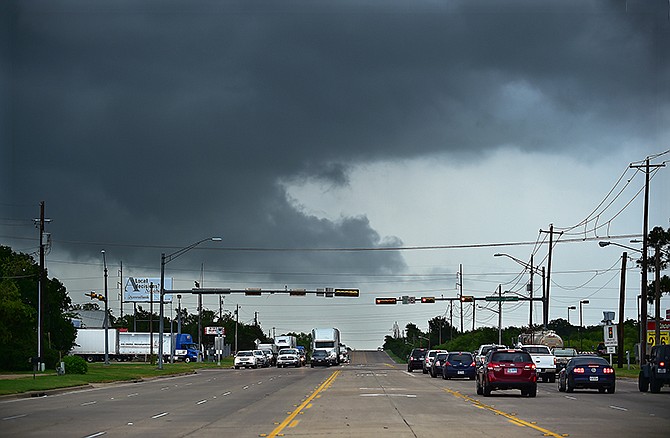DALLAS (AP) - A churning tropical storm has caused little damage so far in Texas, but authorities warned Wednesday that as Tropical Depression Bill moves northeast, already swollen rivers could overflow their banks and cause more problems for water-weary residents.
Sustained maximum winds from the former tropical storm dropped to 35 mph by Wednesday morning, but isolated areas near the Texas coast southwest of Houston saw more than 11 inches of rainfall. Many roads across a broad stretch of eastern Texas were closed due to high water, and hundreds of flights were canceled or delayed.
The National Hurricane Center said the storm was moving north at about 13 mph as it shifted into the Dallas-Fort Worth metro area. Flash flood watches and warnings were in effect.
"Even though the state is facing challenges, it looks like we have been able to avoid the worst," Gov. Greg Abbott said Wednesday.
He and other state officials said the challenge over the next 48 hours will be the abundant rainfall, particularly in North Texas.
About 3 to 5 inches of rain fell on areas of Central Texas still cleaning up and recovering from Memorial Day weekend floods that left 14 dead and two missing along the Blanco River alone in Blanco and Hays counties.
Emergency management officials warily monitored Texas rivers that were forecast to rise through the weekend.
Kent Prochazka, a meteorologist for the National Weather Service near Houston, said the threat of the storm had diminished somewhat, describing Bill as "well-behaved," but warned rising rivers remained a concern.
"We probably are not going to see any magnitude where it's going to be critical, life-threatening or "Take your babies and run,'" Prochazka said.
The focus has "shifted toward the rivers" and how they're able to absorb runoff in the coming days, he said.
The Brazos River southwest of Houston was about 32 feet high Wednesday but was predicted to exceed its flood stage and swell to 50 feet by Sunday. A portion of the Red River, which divides Texas from Oklahoma, ran more than 25 feet high Wednesday, but was forecast to grow to about 37 feet, well above its flood stage.
"We have not seen the last of the rainfall yet, not by a long shot," cautioned Texas state climatologist John Nielsen-Gammon, explaining a band of the tropical depression continues to trail behind the storm system and deliver lingering rain.
The flooding and damage caused by Tropical Storm Allison in Houston and other parts of Texas in 2001 largely came after that storm had passed through the region, he said.
Memorial Day weekend storms had brought widespread flooding to Oklahoma and Texas, killing more than 30 people overall. At one point in May, 11 inches of rain fell in some parts of the Houston area, resulting in flooding that damaged thousands of homes and other structures and forced motorists to abandon at least 2,500 vehicles across the city.
Rafael Lemaitre, spokesman for the Federal Emergency Management Agency, said FEMA has paid nearly $38 million this year in Texas flood insurance claims, with the vast majority associated with last month's deluge.
In North Texas, Dallas authorities monitored road conditions and Arlington residents were picking up sandbags being offered for free by city officials.
Farther north, a flash flood watch was in effect for most of eastern Oklahoma and part of northwest Arkansas. The National Weather Service predicts the storm could drop 3 to 7 inches of rain across Oklahoma before it leaves the state today. The flood watches will likely remain until Friday morning.
Tornadoes were a concern Wednesday in Arkansas, Oklahoma and Texas.
Separate storm systems brought heavy rain elsewhere in the country. Authorities in Missouri said a 60-year-old motorist died when floodwaters swept his car from the road, and the U.S. Army Corps of Engineers declared an emergency in its Kansas City District because of high river levels. Judd Kneuvean, emergency management director for the district, told the St. Joseph News-Press that the corps delivered 43,000 sandbags for use in the Blue River Basin.
Flood warnings were in effect around Illinois, and homes and businesses were evacuated in low-lying areas near the Illinois River.
FEMA personnel who were sent to Texas and Oklahoma after the May storms will stay to help with cleanup after this latest system passes, White House spokesman Josh Earnest said Tuesday.

